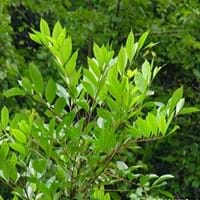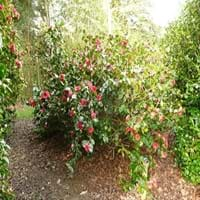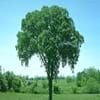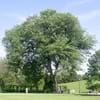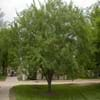Life Span
Perennial
Perennial
Type
Tree
Broadleaf Evergreen
Origin
North America, United States, Northeastern United States, Mid-Atlantic United States, Southeastern United States, Central United States, Texas, Canada
China, Japan, Korea
Types
Not Available
Not Available
Number of Varieties
Not Available
Habitat
Wet lands
Dappled Shade, Shady Edge, Woodland Garden
USDA Hardiness Zone
4-9
7-9
Sunset Zone
Not Available
4, 5, 6, 7, 8, 9, 12, 14, 15, 16, 17, 18, 19, 20, 21, 22, 23, 24
Habit
Upright/Erect
Oval/Rounded
Flower Color
Yellow green
Light Pink
Flower Color Modifier
Bicolor
Not Available
Fruit Color
Light Yellow, Ivory
Black
Leaf Color in Spring
Green, Orange, Dark Green
Dark Green
Leaf Color in Summer
Green, Dark Green
Dark Green
Leaf Color in Fall
Red, Orange, Orange Red
Dark Green
Leaf Color in Winter
Not Available
Dark Green
Plant Season
Summer, Fall
Spring, Summer, Fall, Winter
Sunlight
Partial Sun, Partial shade
Partial Sun, Partial shade
Growth Rate
Medium
Medium
Type of Soil
Clay, Loam, Sand
Loam
The pH of Soil
Acidic, Neutral
Acidic, Neutral
Soil Drainage
Average
Average
Bloom Time
Early Summer, Summer
Early Spring, Late Winter
Tolerances
Wet Site
Not Available
Where to Plant?
Ground
Ground, Pot
How to Plant?
From Rhizomes, Seedlings
Cuttings, Seedlings
Plant Maintenance
Medium
Medium
Watering Requirements
Requires standing water
Average Water Needs, Do Not over Water
In Summer
Lots of watering
Drought Tolerant, Average Water
In Spring
Moderate
Moderate
In Winter
Average Water
Average Water
Soil pH
Acidic, Neutral
Acidic, Neutral
Soil Type
Clay, Loam, Sand
Loam
Soil Drainage Capacity
Average
Average
Sun Exposure
Partial Sun, Partial shade
Partial Sun, Partial shade
Pruning
Remove damaged leaves, Remove dead branches, Remove dead leaves
Remove damaged leaves, Remove dead branches, Remove dead leaves
Fertilizers
All-Purpose Liquid Fertilizer
10-10-10, 8-8-8
Pests and Diseases
Not Available
Black Mold, Flower Blight, Free of serious pests and diseases, Leaf Gall, Leaf spot
Plant Tolerance
Drought
Not Available
Flowers
Insignificant
Showy
Flower Petal Number
Single
Double
Foliage Texture
Medium
Medium
Foliage Sheen
Glossy
Glossy
Attracts
Birds
Butterflies
Allergy
Irritate the mucus membrane, Rash, Skin irritation
no allergic reactions
Aesthetic Uses
Not Used For Aesthetic Purpose
Bonsai
Beauty Benefits
Not Available
Not Available
Environmental Uses
Air purification
Air purification
Medicinal Uses
No Medicinal Use
Astringent, Cancer, Haemostatic, Salve, Tonic
Part of Plant Used
Sap
Flowers, Leaves, Seeds
Other Uses
Used to make a black varnish for use in woodworking
As a tea substitute, Used as a hair-dressing oil, Used for making green dye
Used As Indoor Plant
No
Yes
Used As Outdoor Plant
Yes
Yes
Garden Design
Not Available
Feature Plant, Foundation, Mixed Border, Topiary, Bonsai, Espalier
Botanical Name
TOXICODENDRON vernix
CAMELLIA japonica 'Debutante'
Common Name
Poison Dogwood, Poison Elderberry, Poison Sumac, Swamp Sumac
Camellia, Debutante Camellia, Japanese Camellia
In Hindi
toxicodendron vernix
Japanese Camellia
In German
toxicodendron vernix
Japanische Kamelie
In French
TOXICODENDRON vernix
Camellia japonais
In Spanish
vérnix TOXICODENDRON
Camelia japonesa
In Greek
Toxicodendron vernix
Ιαπωνικά Camellia
In Portuguese
TOXICODENDRON vernix
Camellia japonês
In Polish
toxicodendron vernix
Japoński Camellia
In Latin
Natrum vernix
Camellia Italica
Phylum
Magnoliophyta
Magnoliophyta
Class
Magnoliopsida
Magnoliopsida
Family
Anacardiaceae
Theaceae
Genus
Toxicodendron
Camellia
Clade
Angiosperms, Eudicots, Rosids
Angiosperms, Asterids, Eudicots
Tribe
Not Available
Theaeae
Subfamily
Not Available
Theoideae
Number of Species
Not Available
Not Available
Properties of Poison Sumac and Japanese Camellia
Wondering what are the properties of Poison Sumac and Japanese Camellia? We provide you with everything About Poison Sumac and Japanese Camellia. Poison Sumac doesn't have thorns and Japanese Camellia doesn't have thorns. Also Poison Sumac does not have fragrant flowers. Poison Sumac has allergic reactions like Irritate the mucus membrane, Rash and Skin irritation and Japanese Camellia has allergic reactions like Irritate the mucus membrane, Rash and Skin irritation. Compare all the properties and characteristics of these two plants. Find out which of these plant can be used as indoor plant. If you are interested to decorate your house and garden, find out aesthetic uses, compare them and select the plant which will beautify your surrounding. Along with beautification, try comparing medicinal and edible uses of Poison Sumac and Japanese Camellia and you can choose the plant having best and most benefits.
Season and Care of Poison Sumac and Japanese Camellia
Season and care of Poison Sumac and Japanese Camellia is important to know. While considering everything about Poison Sumac and Japanese Camellia Care, growing season is an essential factor. Poison Sumac season is Summer and Fall and Japanese Camellia season is Summer and Fall. The type of soil for Poison Sumac is Clay, Loam, Sand and for Japanese Camellia is Loam while the PH of soil for Poison Sumac is Acidic, Neutral and for Japanese Camellia is Acidic, Neutral.
Poison Sumac and Japanese Camellia Physical Information
Poison Sumac and Japanese Camellia physical information is very important for comparison. Poison Sumac height is 240.00 cm and width 300.00 cm whereas Japanese Camellia height is 210.00 cm and width 165.00 cm. The color specification of Poison Sumac and Japanese Camellia are as follows:
Poison Sumac flower color: Yellow green
Poison Sumac leaf color: Green, Orange and Dark Green
Japanese Camellia flower color: Light Pink
- Japanese Camellia leaf color: Dark Green
Care of Poison Sumac and Japanese Camellia
Care of Poison Sumac and Japanese Camellia include pruning, fertilizers, watering etc. Poison Sumac pruning is done Remove damaged leaves, Remove dead branches and Remove dead leaves and Japanese Camellia pruning is done Remove damaged leaves, Remove dead branches and Remove dead leaves. In summer Poison Sumac needs Lots of watering and in winter, it needs Average Water. Whereas, in summer Japanese Camellia needs Drought Tolerant, Average Water and in winter, it needs Average Water.
